The Burana Tower: A fascinating history of grandeur in Kyrgyzstan
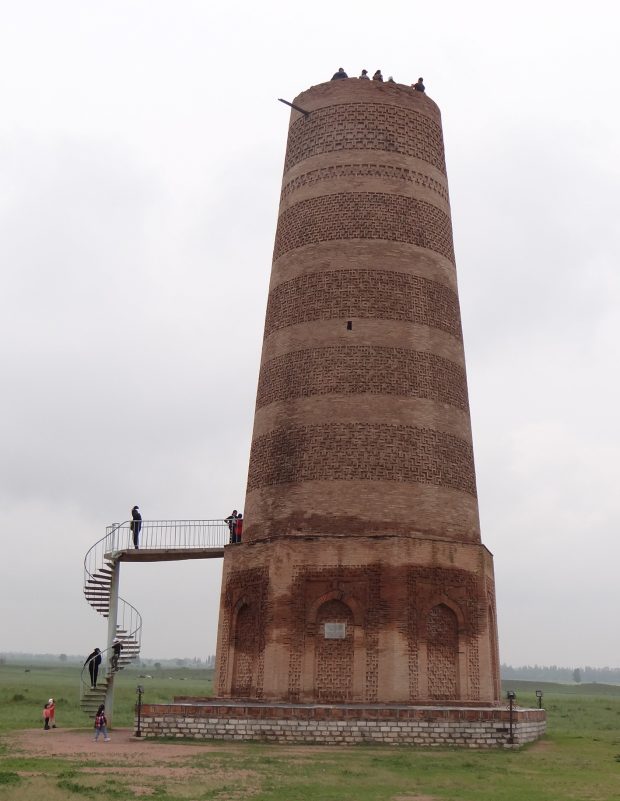
The pompous and majestic Burana Tower. Two staircases, one on the outside and one in the inside, allow visitors to climb to the top
By Habib Toumi
BISHKEK: In the interpretation of dreams, climbing spiral stairs is a sign that you are on the right path to spiritual growth and that good things that are coming your way.
That hopeful interpretation may be great, but right now I am in a dark place, trying to climb incredibly steep stairs and I feel that without the light coming from the mobile of my good friend and companion Azat climbing just ahead of me, I would scramble vertically.
Unable to see anything in the darkness when the phone light is off, my left hand on the step above and the right one against the wall, I seek to support myself, doing my best balancing act not to fall backwards.
The winding passageway inside the Burana Tower is so small that it takes strong determination to keep moving up the daunting stairs and not to tumble to the bottom.
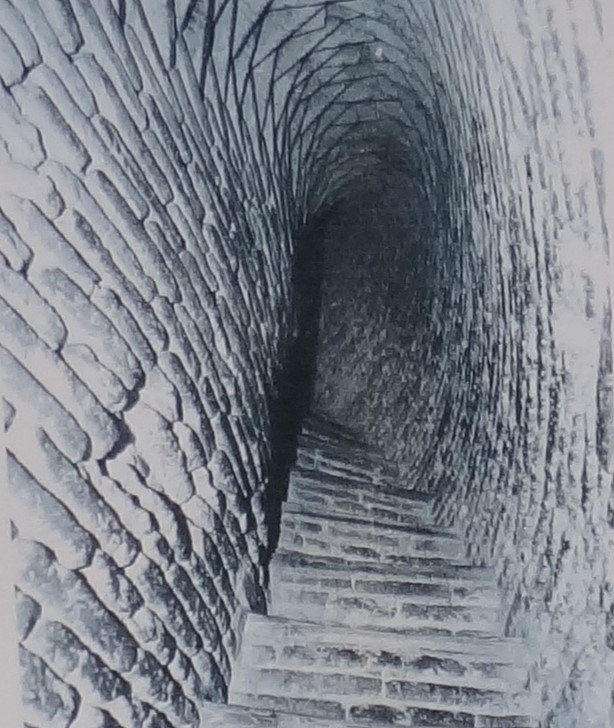
The staircase inside the tower. Without the light, it is absolute darkness!
Midway through the climbing, a small window offers some light and hope that the challenge is almost over.
I hear the shout and laughter of young students who have already reached the top. For many of the boys and girls in their early teens, the Burana Tower, the impressive ancient minaret that survives today as one of the key historical sites in Kyrgyzstan, is another opportunity of learning history and culture through sweet fun.
I finally reach the top where I am rewarded with a superb view on the Chuy valley and the Ala-Too Mountain range in northern Kyrgyzstan.
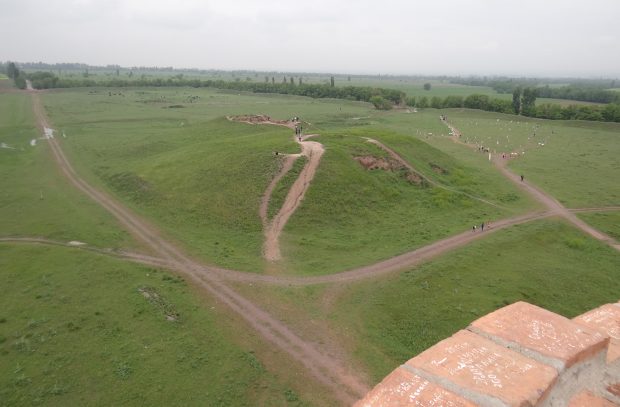
The hill near the minaret that is yet to be explored
The land stretching in every direction is almost empty, but in the era between the 9th and 11th centuries, it was filled with houses, bazaars, shops, baths, squares as part of Balasagun, the ancient city constructed by the Karakhanids in the 9th century.
According to UNESCO, Balasagun sat on a caravan road that connected China, India, Central Asia, the Middle East, and Europe. The capital of the Karakhanid Empire, Balasagun was inhabited throughout the 10–14th centuries.
“In 940, the Karakhanids, the first Turkic dynasty officially converted to Islam, conquered Balasagun, which became the capital of their state, along with Kashgar.
After the division into the Eastern and Western Khaganates in 1041–1042, it remained the main city of the eastern part of the empire.
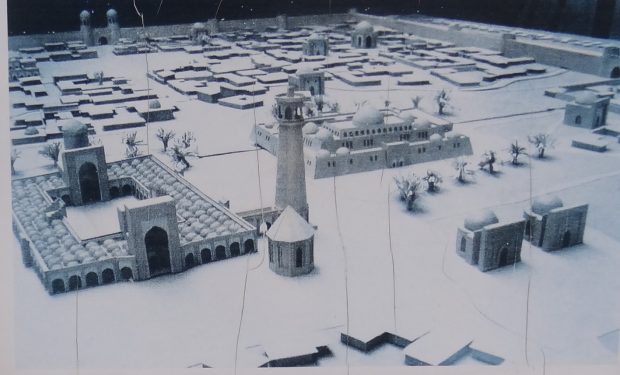
Balasagun: The way it was
From the 1130s to early 13th century, it was the capital of the Western Liao (Kara-Khitan, Kara-Kitai), and from 1211 to 1218 of the Naimans. Under the Mongols, at the beginning of the 13th century, the city was named Gobalyk “Pretty City” and existed until the 14th century.”
Located in the Chuy region in northern Kyrgyzstan about 70 kilometers east of today’s capital Bishkek, Balasagun was a grand medieval megapolis.
“The many remaining brick foundations of houses, market squares, various buildings indicate that Balasagun was a very large and developed city. According to historical documents, about 16,000 inhabitants lived in Balasagun about 30 sq km in size. It was a metropolis for its time. Life was in full swing here and new caravans came after the others. The passage of caravans packed with foreign goods is confirmed by the findings of all kinds of coins, jewelry, ceramics and other items oftentimes of European origin. The city was flourishing and became one of the richest in Central Asia.”
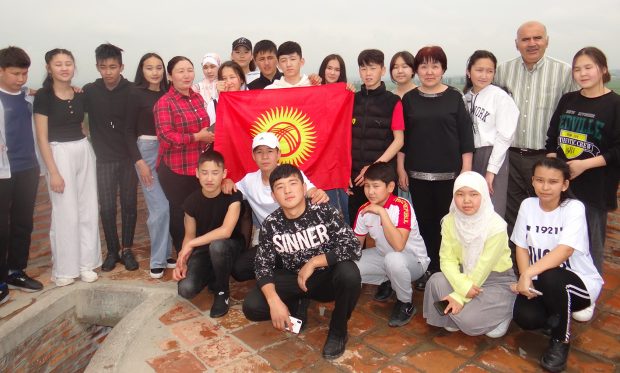
Students and teachers treasure the memory of climbing the tower next to the stairs opening
The Burana Tower, with its initial height of 46-47 meters, is one of the most famous minarets in Central Asia. It is protected as a UNESCO World Heritage site.
At its base, the minaret is 9.3 meters wide, but at the top it finishes with a width of only 6 meters.
The minaret consists of foundation of 5.6 meters which is deep inside ground having an octagonal shape. The trunk is decorated with octagonal belts. Entrance to the tower is located ata height of meters from the ground. The spiral staircase, made of bricks, leads to the top from the inside, On the eastern side at a height of 12 meters, it has a window for light.
For UNESCO, the pompous and majestic Burana Tower was the minaret of the Jami Mosque and is considered one of the first structures of this kind in Central Asia.
“Minarets were usually built into or adjacent to mosques and were intended to call believers to prayer. Historians and archaeologists believe that the mosque used to be located on the western side of the tower. Like majority of minarets, the Burana Tower was crowned with an onion-shape top, which had four doorways facing the cardinal directions.”
“The tower, built of baked bricks, has the shape of a cylinder tapering towards the top. It was used by the Karakhanids both as a minaret and as a watchtower. At the top there was always a designated person who showed the way to distant caravans with a lantern so that they would not get lost on the way.”
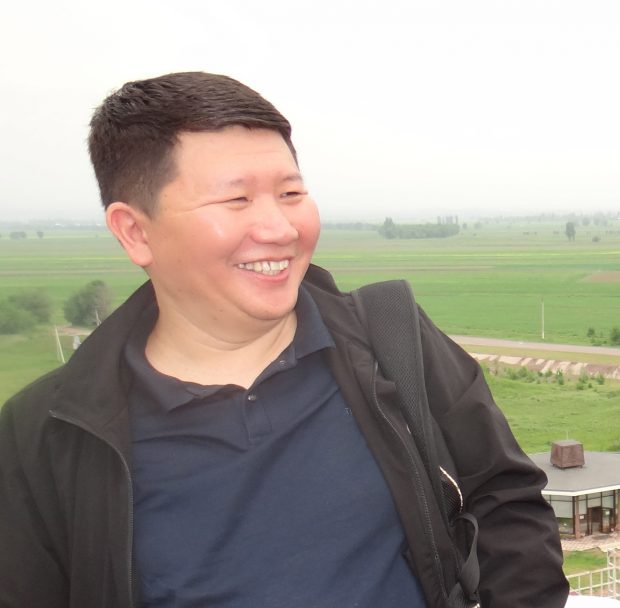
Azat provides invaluable details about the tower and the site
Azat , in his quiet voice, says that according to the legend, the Tower was built by a khan to protect his only daughter whose beauty and intelligence won the love of the people, after a soothsayer predicted that she would die from the bite of a karakurt (black spider).
The beauty lived at the top of the tower, and each visitor was carefully checked. However, on her 16th birthday, the khan by misfortune did not check the grapes he brought her on her special day. Amid the grapes, there was a karakut. The poisonous bite killed the young girl.
Over the centuries, repeated earthquakes damaged the minaret, reducing its height to 24 meters. It was restored in 1970-1974 to address concerns that it would collapse.
Today, the 89-acre area is an open-air historical and architectural complex that features mausoleum foundations in clay, petroglyphs from the second century B.C. found in the Chuy region and many “Balbals”, memorial stones to dead soldiers from the sixth century from the Turkish era.
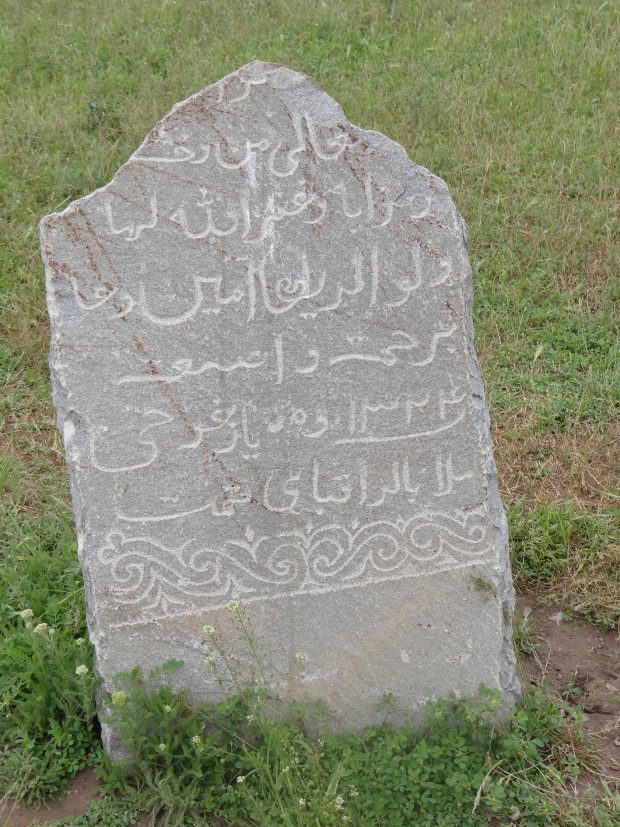
Arabic eulogy on Balbals from the sixth century
The small stone figures were reportedly used to honor the dead and sometimes marked burial places, old tombstones, millstones and rocks with carvings.
The majority of the stones are shaped as men of Mongoloid appearance, with a mustache and beard, sometimes with braided hairstyle. A goblet was often carved in the right hand, the left hand rested on the hilt of a sword or dagger suspended from the belt.
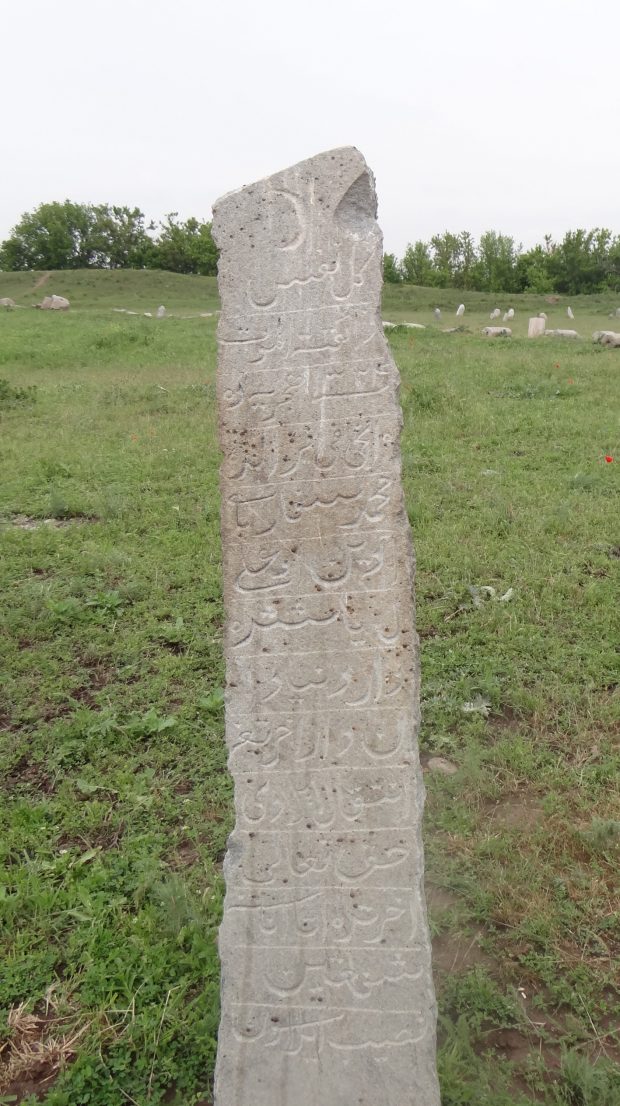
An elongated balbal with Arabic text
I could easily read the inscriptions in Arabic on many of the elongated stones.
Even though time has not spared Balasagun, the Burana Tower and the surrounding area have survived and remain an outstanding testimony to the power the city once had and to the rich history of Kyrgyzstan.
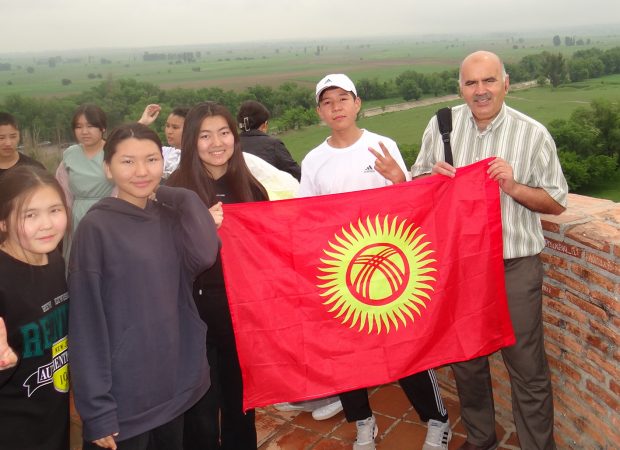
Young students pose for a picture following a conversation about their school
The site is a source of interesting immersion into the rich past of the region and Kyrgyzstan for the numerous tourists and students on school trips that we met during the visit.





















































